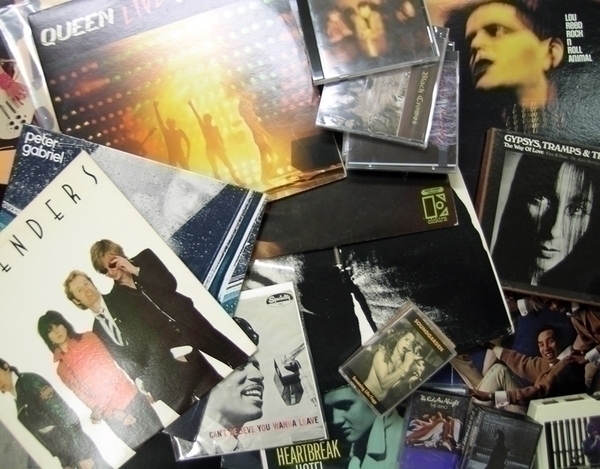Gearing up to install Who Shot Rock
Since early 2007, I’ve been working with the noted photo historian Gail Buckland to create Brooklyn Museum’s exhibition Who Shot Rock & Roll: A Photographic History. It’s hard to believe, now 2 years later, the show’s about to open on October 30th.
Pouring over hundreds of photographs, the exhibition slowly took shape . . . the section themes emerged . . . and I started to work with different design concepts. Should the design span the past 50 years of rock, from blue suede shoes to psychedelic to punk to grunge to today? Or should it feel like an austere Chelsea gallery . . . like a “serious” photography exhibition? Should it feel more round and analog . . . or more geometric and digital? Like drums and guitars, with wailing vocals? Like Led Zeppelin is in the room?
The final design, which you’ll see at the end of the month, is the result of thinking through many ideas of what an exhibition about music could look and feel like and how the visitor should move through the space. Next week we’ll begin hanging the works in the gallery, one-by-one . . . but in final preparation, there is one special component of the show that I’ve had a guilty pleasure assembling: the album cover chronology.

Over the Summer, I’ve rummaged through most every rock-and-roll memorabilia store in the city . . . scoured listings on ebay endlessly . . . encountered many vinyl aficionados . . . and had quite a few “a-ha” moments. And yes, we’re including all formats . . . 8-tracks, cassettes, CDs . . . . but mostly vinyl . . . hopefully you’ll have a cool walk down memory lane, just like I did.

Matthew Yokobosky came to the Brooklyn Museum as an exhibition designer in 1999, and was appointed Chief Designer in 2002. He earned a B.A. in film studies and design from the University of Pittsburgh in 1986, and, one year later, moved to New York to work at the Whitney Museum of American Art. While at the Whitney, Yokobosky held many positions, including exhibition designer (1995 Biennial, The American Century (1999)) and associate curator of film and video (No Wave Cinema, 1996; Fashion & Film, 1997). During the same period, he designed theater productions (Ping Chong's 1989 show Brightness, which won a Bessie award for set and costume design) and books (Yoko Ono: Arias and Objects, 1991). For the Brooklyn Museum, he has designed the critically acclaimed Luce Center for American Art (2002/2005, permanent installations), as well as over 30 temporary exhibitions including Hiroshige: 100 Famous Views of Edo (2000), Basquiat (2005), Annie Leibovitz (2006-7), and I Wanna Be Loved by You: Photographs of Marilyn Monroe (2004), which he also curated.
